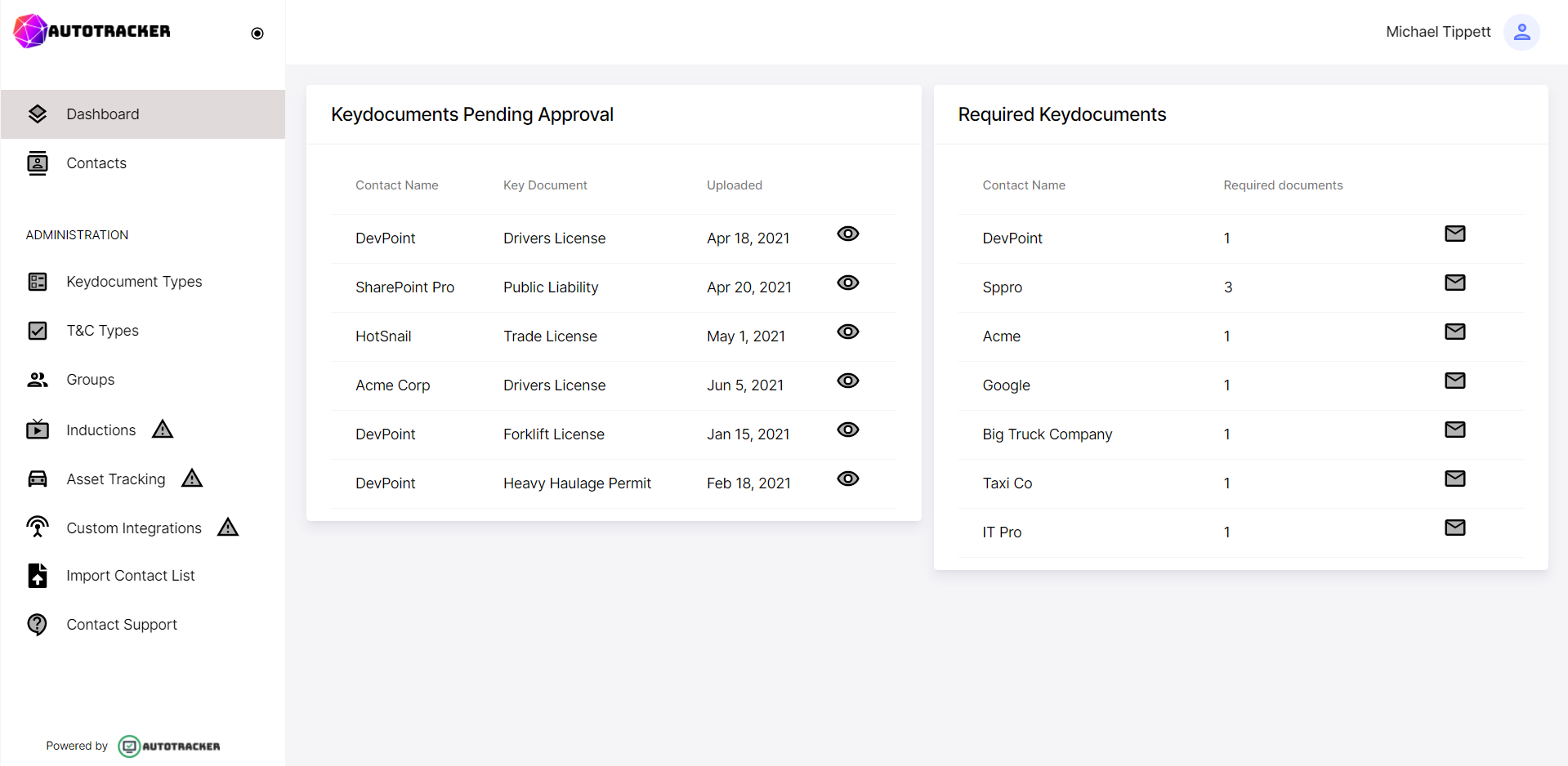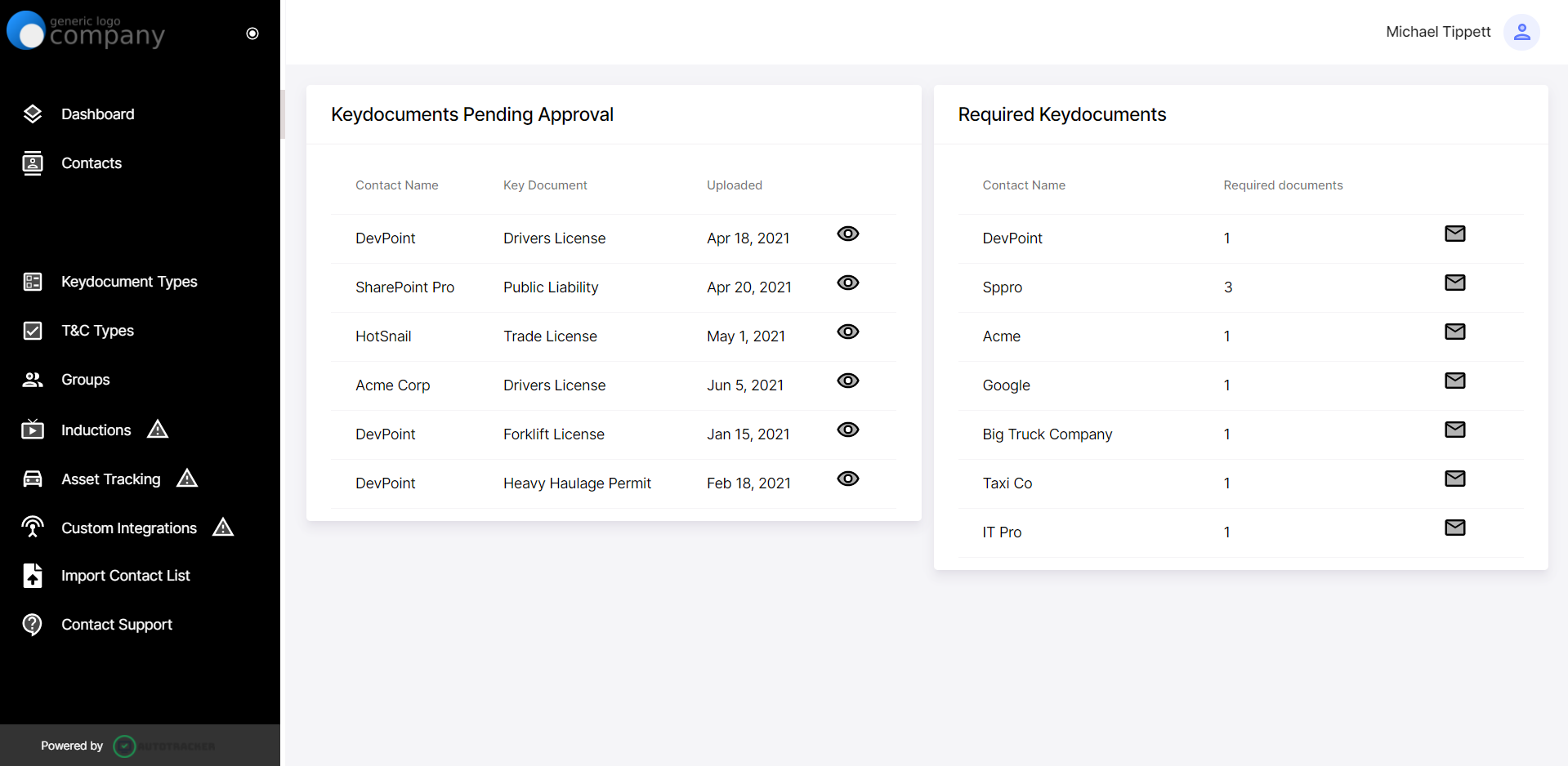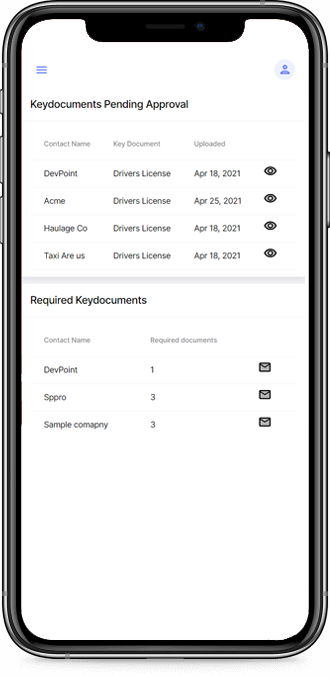Features
DocKeeper possess many great inbuilt features. With simple Point & Click Editors and full access to customise key document types, email templates and notification frequency. DocKeeper makes it super easy for client companies to implement an efficient document tracking solution.
Customise key documents
You can configure your key documents in your own way. DocKeeper provides you with the freedom to choose what type of document your contact uploads. You can set your key documents to require image verification or custom data such as document number and expiry date.
Client reminder emails
Our notification system gives you the opportunity to set up an automated prompt that notifies your contacts when they are required to upload key documents as well as when their documents are almost due for renewal.
Admin alerts
As an admin, you get to know when a contact fails to upload the required key documents.
Never chase another document.
With DocKeeper’s automated system, you never get to run after a supplier for their licenses/qualifications. Just sit back while we constantly help you notify your contacts based on your set preference. We also inform you of the activities of your contacts as and when due. DocKeeper enables you to decide how you want your contacts to be notified. As a registered company, you can determine when or if a reminder email is sent to your contacts. A contact email is sent every month until the contact uploads the required document while an expiry email is sent one week before the expiration of a key document.
Automatic notifications
DocKeeper notifies contacts when they are required to provide a key document. You simply need to set your notification preferences and leave the rest to us.
Expiration Alerts
With preset automated instructions, DocKeeper never forgets to inform your contacts BEFOREHAND when the expiration of a key document is forthcoming.
Terms and conditions
In order to ensure a strict compliance to your modus operandi, DocKeeper features an optional customisable Terms and Conditions section.
Reporting Dashboard
Enables planners and leadership to track how much the application helps them save costs and deliver on time along with strategizing for the future.
Client Portal
Our client portal is designed to serve as a perfect interface that ensures a smooth interaction between our clients and their contacts. DocKeeper has a default brand design for every newly registered company.
However, since it is your portal as a registered client, you own the liberty to customise your portal to match your company colours.


Custom company branding
Your portal can be branded to your company colours & logo.
DocKeeper affords your company the freedom and opportunity to ensure that the look and feel of your portal looks like it was developed by your company.
To enjoy a fully customized portal on DocKeeper for your company, view branding video

Mobile Responsive
DocKeeper has been designed to function perfectly on your mobile device. When opened on a mobile device, the website automatically adjusts itself to give you a suitable and smooth mobile view for both the admin and client portals.
It doesn’t stop at that, you don't need access to a scanner to upload your key documents; we have made uploading super easy. DocKeeper allows you to make use of your mobile phone camera to capture and upload your key documents right on the spot. Suffice to say that with our mobile responsive site function, you can carry out all your functions on the go.
Developed in Australia
DocKeeper is an industry non-specific responsibility management software that has been designed to help you collect data in an automated way. This platform is fashioned to help you track key documents such as driver’s license, premits and insurances automatically. As a booking entity, you are the first point of audit. It is therefore imperative that you ensure that contacts registered under you are in total compliance with the requirements starting from qualification to the possession of the key documents required to operate.
With DocKeeper, the onus is on the on the supplier, employee or client to update their own key documents. It is, therefore, no gainsaying that DocKeeper was designed to cater for Chain of Responsibility and ensure that client companies are rescued from the heavy punishments -ranging from whopping fines to imprisonment- that await them if non-compliance is observed.
Frequently Asked Questions
What is a key document?
Who do you mean by "contact"?
What happens if a contact fails to upload their key document?
Can I customize the notification emails?
What if I have an idea for a feature?
Can DocKeeper integrate with my current systems?
Is DocKeeper secure?
Pricing Plan
Need a custom package? Contact us
Beta Special
$ 49 / month
Upto 50 active contacts
Unlimited Date Reminders
Unlimited Groups
Easy Uploads
Amendment Tracking & Audit Log
Unlimited Document Types
Your logo an colours
DocKeeper branding everywhere
Email & chat support
Prioritised technical support
Register nowFree
$0 / month
Upto 10 active contacts
Unlimited Date Reminders
No Groups
Easy Uploads
Amendment Tracking & Audit Log
Unlimited Document Types
Add your logo an colours
DocKeeper branding everywhere
Email & chat support
Register nowStandard
$49 / month
Upto 50 active contacts
Unlimited Date Reminders
Unlimited Groups
Easy Uploads
Amendment Tracking & Audit Log
Unlimited Document Types
Add your logo an colours
DocKeeper branding everywhere
Email & chat support
Register nowProfessional
$99 / month
Upto 100 active contacts
Unlimited Date Reminders
Unlimited Groups
Easy Uploads
Amendment Tracking & Audit Log
Unlimited Document Types
Add your logo an colours
DocKeeper branding removed
Email & chat support
Prioritised technical support
Register nowEnterprise
$149 / month
Upto 250 active contacts
Unlimited Date Reminders
Unlimited Groups
Easy Uploads
Amendment Tracking & Audit Log
Unlimited Document Types
Add your logo an colours
DocKeeper branding removed
Custom domain
Email & chat support
Prioritised technical support
Dedicated relationship manager
Register nowContact Us
Enquire Now
Do you have questions or feature requests? We want to hear from you!
PO Box 16, Nobby Beach, 4218, Australia